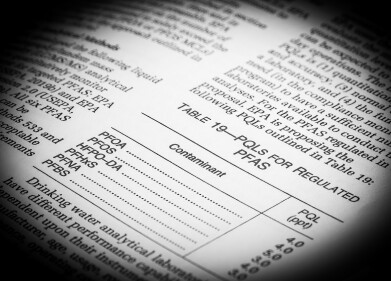PFAS analysis
Are you trying to set up your lab for PFAS analysis?
Sep 10 2021
Per- and polyfluoroalkyl substances (PFAS) are a large family of over 4,000 synthetic chemicals that have been widely used in industry and consumer products. Due to their carbon-fluorine bonds, PFAS resist degradation and elevated temperatures. However, their characteristic stability means that PFAS can also persist and accumulate in the environment, which poses certain risks to animal and human health. For this reason, several PFAS are subject to regulations restricting their use and their concentrations in various matrices.
Understanding PFAS analytical methods and regulations as well as choosing the right instruments and consumables is key to getting your lab ready for PFAS analysis. To shorten start-up time, Agilent provides LC/MS/MS eMethods to get you up and running in the shortest time possible.
The PFAS in Drinking and Surface Water by LC/TQ eMethod is verified for the separation and reliable detection of 100 native and isotopically labelled PFAS in drinking and wastewaters, including 60 PFAS with reported method detection limits. The method includes target compounds that are part of standard methods and regulatory lists such as EPA Method 537.1, EPA Method 533, SW-846 Method 8327, SW-846 Draft Method 8327, ASTM D7979-19, ASTM 7968-17a, ISO 21675:2019, Europe (EU) WfD & DWD, Japan Drinking Water Quality Standards, and Germany DIN methods. The Agilent 1290 Infinity II LC and the Agilent 6470 triple quadrupole LC/MS are used in combination to provide high-quality LC/MS/MS results. Sample preparation is performed with Agilent SampliQ weak anion exchange (WAX) cartridges, and an Agilent ZORBAX RRHD Eclipse Plus C18 column is used in LC analysis.
In addition to acquisition and quantitation methods, the PFAS eMethod includes sample preparation protocols, a detailed training video with a step-by-step workflow guide, and references to expertly selected consumables and supplies to minimize cost and effort to design and plan the required analyses.
The eMethod makes use of the Agilent PFAS multiple reaction monitoring (MRM) database for triple quadrupole LC/MS, which features data for over 100 native and isotopically labelled PFAS. The database includes details of the intrinsic properties and identifiers of PFAS such as chemical name, CAS number, and molecular formula. It also features optimised MRM parameters for the analysis of 72 native and 36 isotopically labelled compound from 14 PFAS groups, as well as retention time data from optimised methods.
The eMethod is designed for labs that want a widely applicable testing method and that do not plan to run dedicated regulated methods. For labs running regulated methods, the eMethod in conjunction with the Agilent PFAS MRM database can be a helpful building block to modify existing methods to expand analytical capabilities.
Digital Edition
IET 35.2 March
April 2025
Air Monitoring - Probe Sampling in Hazardous Areas Under Extreme Conditions - New, Game-Changing Sensor for Methane Emissions - Blue Sky Thinking: a 50-year Retrospective on Technological Prog...
View all digital editions
Events
Apr 29 2025 Edmonton, AB, Canada
Apr 30 2025 Ankara, Turkey
May 06 2025 Nuremberg, Germany
May 10 2025 Karachi, Pakistan
May 11 2025 Vienna, Austria













_(4427399123)-(2).jpg)










